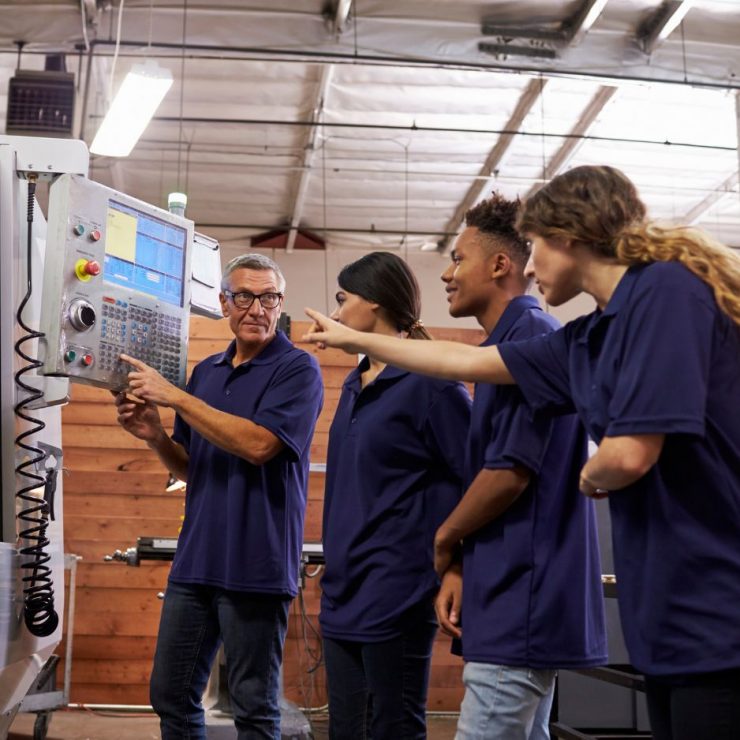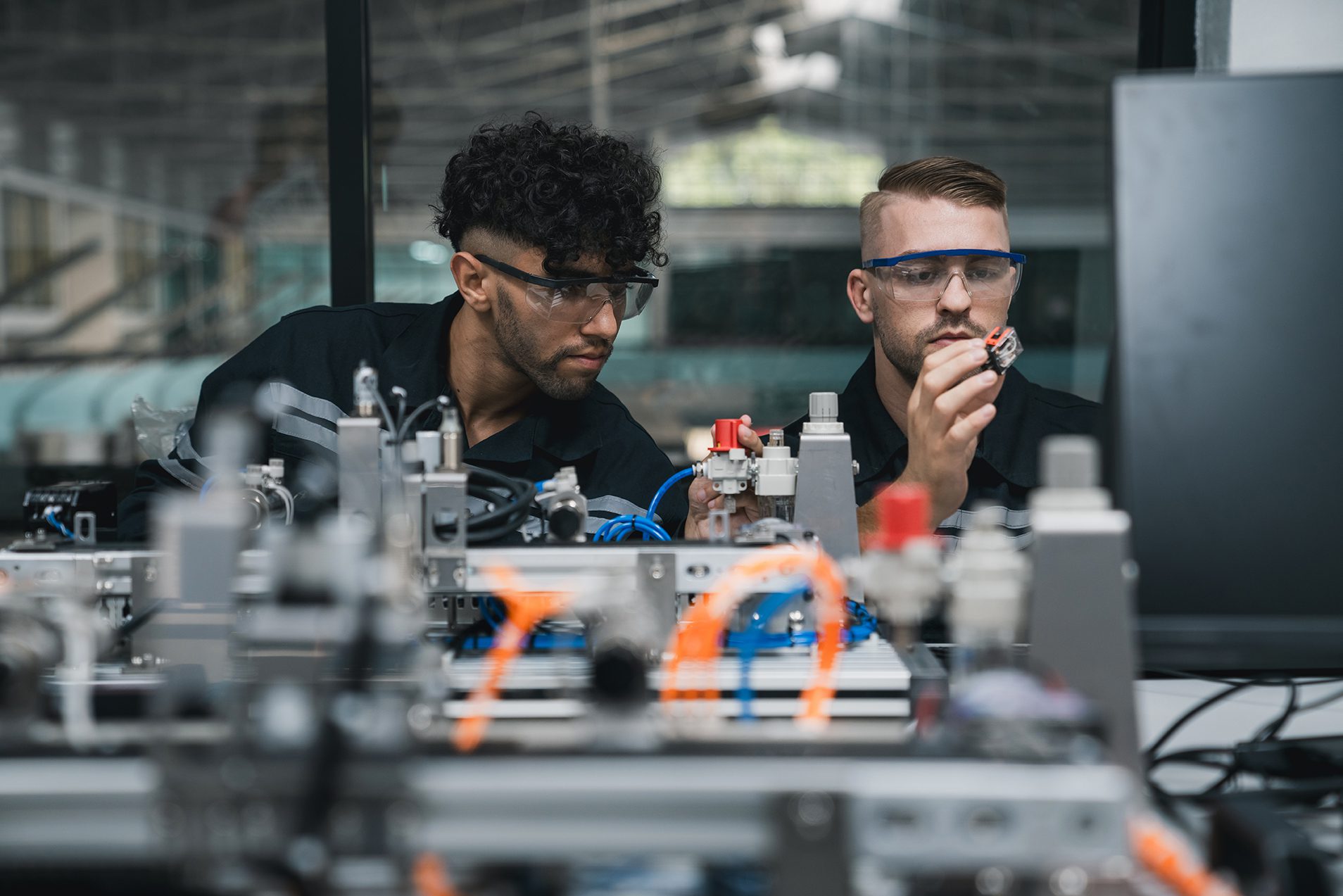Industry placement of at least 45 days
Students get valuable workplace experience
Employers get early sight of new talent
80% in learning environment
Key changes for employers

Simulated work environments
Up to one-third of placement hours can be via simulated environments on training provider sites using employer skills hubs or live training facilities.
This change is particularly valuable for high-risk industries such as engineering and manufacturing, where students can now develop foundational skills in a controlled environment before entering the workplace.
These simulated experiences help students become better prepared for real-world challenges while giving employers confidence that students arrive with practical experience.

Broader placement opportunities
T Level placements have become more versatile, no longer restricted to specific subjects within a T Level route. For example, a Manufacturing student can now gain experience in Maintenance Engineering operations within the same Engineering and Manufacturing route.
This allows students to understand both production processes and the critical maintenance systems that keep them running – providing a more holistic understanding of manufacturing environments.
For employers, this means access to students with a broader perspective and versatile skills that span related disciplines.

Remote working options
The new guidelines embrace the reality of hybrid working that has become standard in many industries.
Digital T Level students can now complete up to 50% of their placement hours remotely, while students in all other T Levels can complete up to 20% of their hours away from the traditional workplace.
This approach reflects contemporary working practices and helps overcome geographical barriers, making placements more accessible for both students and businesses with limited physical space.

Expanded placement opportunities
All T Levels can now be delivered at route level rather than pathway level, providing more flexibility with multiple employer options. Students can complete placements with either:
- up to two separate employers, or
- up to three employers within the same supply chain or network, allowing for a broader understanding of industry processes.

Benefits to businesses
These reforms create tangible advantages for participating employers.
Administrative burdens have been reduced through streamlined processes, making it easier to host students.
The flexible implementation options mean you can choose approaches that align with your business model and operational realities. For small and medium-sized enterprises (SMEs), these new options make placements viable despite constraints in space or resources.

“Allowing supervised simulated placements on training provider sites is particularly valuable for high-hazard industries with safety-critical sites within engineering construction. It will enable T-level students to gain hands-on experience in a safe and controlled environment.
“Combined with route-level placements, employers can now offer more comprehensive industry experience. These changes will help to better prepare students and give employers confidence in supporting T Level placements across our industry.”
Andrew Hockey
CEO of the Engineering Construction Industry Training Board

Sign up for updates
Your information will be used to subscribe you to our e-newsletter.
For more information, please see our Privacy Notice.




